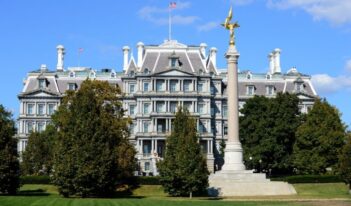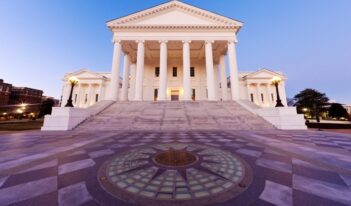
The Trump Administration’s 1-in-2-out policy is more of an ineffective symbol than an action toward deregulation.
One of Donald Trump’s first actions as President was to issue Executive Order 13,771, known as the “1-in-2-out” order on regulations, which drew both praise and strong criticism.
Just after the order was issued, I wrote an article for The Regulatory Review describing how this order would impose an arbitrary regulatory budget—forcing agencies to ignore the benefits of new regulations and, instead, to focus only on the costs to corporations and other regulated entities. At the time, there were also significant unresolved questions about both the legality of the order and the technical feasibility of regulatory budgeting.
Three years after the order’s implementation, President Donald J. Trump’s 1-in-2-out regulatory budgeting has been an abject policy failure on multiple levels.
First, the Administration has defended the order’s legality by arguing in court that it plays no meaningful role in regulatory decision-making—a claim that, if true, demonstrates the order’s worthlessness.
Second, numerous agencies were unable to comply with the order in fiscal year 2019, leading to the Administration missing its required 1-in-2-out target when comparing significant deregulatory actions to regulatory ones.
Third, as I predicted, the order has forced agencies to wholly ignore the benefits of regulation to the public—leading some agencies, such as the U.S. Department of Justice and the U.S. Environmental Protection Agency (EPA), to issue deregulatory rules whose costs exceeded the benefits so that agencies could count the cost savings.
When President Trump issued the executive order in 2017, nonprofit consumer advocacy organization Public Citizen, along with some labor and environmental organizations, challenged the order in court on the grounds that it was unconstitutional, it required agencies to violate the Administrative Procedure Act and other statutes, and it necessitated agencies to take actions not authorized by any statute.
The Trump Administration’s defense was both confounding and unexpected. It argued that Public Citizen could not prove that the order was causing agencies to block or delay any regulations. In response, the U.S. Department of Transportation and U.S. Department of Energy both produced affidavits, stating that the executive order had “not been a factor affecting any decisions about when or whether to issue a final rule.”
In other words, the Trump Administration’s legal position was that its signature executive order on regulation was entirely meaningless.
Even more surprising is the most recent report on agency compliance with Executive Order 13,771 for fiscal year 2019, which revealed that the Trump Administration did not bother to comply with the order. The report indicated that nearly one out of three agencies imposed costs that were not offset by cost savings, violating the order’s cost caps.
EPA went the furthest in breaking its regulatory budget for fiscal year 2019, reporting more than $8 billion in new costs. These costs likely stemmed from the agency’s dramatic reversal of the Clean Power Plan’s designation from “deregulatory” at the proposed stage to “regulatory” at the final stage.
At the proposal stage, EPA counted significant cost savings to industry, along with costs to public health, compared to keeping the Clean Power Plan in place. But at the final stage, EPA reached the opposite result because it assumed that the Clean Power Plan never existed. EPA’s estimate of the final rule minimized the costs to public health but also modestly increased costs to industry, instead of delivering significant cost savings. In essence, this opposite conclusion of the projected effects of the final rule removed EPA’s ability to use the cost savings originally anticipated toward its regulatory budget.
In addition, the Trump Administration did not meet its 1-in-2-out target in fiscal year 2019. The U.S. Office of Information and Regulatory Affairs (OIRA) reported that agencies issued 61 significant deregulatory actions compared to 35 significant regulatory actions—a ratio of 1.7-to-1 that falls short of the 2-to-1 requirement in the executive order.
The Administration, however, claims that it met its 1-in-2-out target by counting all the deregulatory actions issued and not just the significant ones. But that claim is an intellectually indefensible apples-to-oranges comparison because it requires counting many types of rules on the deregulatory side of the ledger that were not also counted on the regulatory side.
As I support robust regulatory protections for the public, the Administration’s failure to meet its arbitrary and aggressive deregulatory targets in fiscal year 2019 is hardly a disappointment. This outcome, though, does illustrate what a sham the order has turned out to be in practice.
For fiscal year 2020, OIRA already is allowing at least two agencies—the U.S. Department of Homeland Security (DHS) and the U.S. Social Security Administration—to violate the executive order’s regulatory budget. For example, DHS projects $35 billion in new costs that have not been offset, which are likely deriving from immigration regulations that harm both immigrants and businesses.
As both the fiscal year 2019 outcomes and the anticipated costs for 2020 reveal, the focus on regulatory cost savings under Executive Order 13,771 is in tension with the goal of maximizing the net benefits of regulation under President William Clinton’s Executive Order 12,866—an order that creates standards for developing regulations that agencies are required to follow, such as using cost-benefit analysis, risk assessment, and performance-based standards.
This tension was on full display when the Trump Administration weakened vehicle fuel efficiency standards put in place under the Obama Administration—an action that still is under review at OIRA. OIRA has repeatedly singled out this rule as providing enormous cost savings for industry under Executive Order 13,771, but a recent report indicates that the Transportation Department’s draft final rule projects up to $40 billion in net costs rather than benefits.
Other news reports suggest that this cost could be a sticking point, preventing the Trump Administration from finalizing its proposed weaker fuel efficiency standards. If true, this expense would cancel out a considerable amount of the expected cost savings under Executive Order 13,771 and increase the likelihood that the Administration will continue to violate its own order going forward.
If, on the other hand, the Administration finalizes the fuel efficiency rule despite its enormous net costs, the Administration will show that it is willing to violate Executive Order 12,866 to comply with Executive Order 13,771. Either way, the fuel efficiency rule illustrates the fundamental tension between the two executive orders and invalidates claims by the Administration that it can comply with both.
Because the Administration represented in court that Executive Order 13,771 was not delaying or blocking final rules and has allowed several agencies to violate regulatory budgets imposed pursuant to the order, the only purpose of the order is symbolic messaging.
As policy, the Trump Administration’s experiment with a regulatory budget under Executive Order 13,771 has been a categorical failure.
This essay is part of a five-part series, entitled Debating the Repercussions of Trump’s Deregulatory Agenda.




